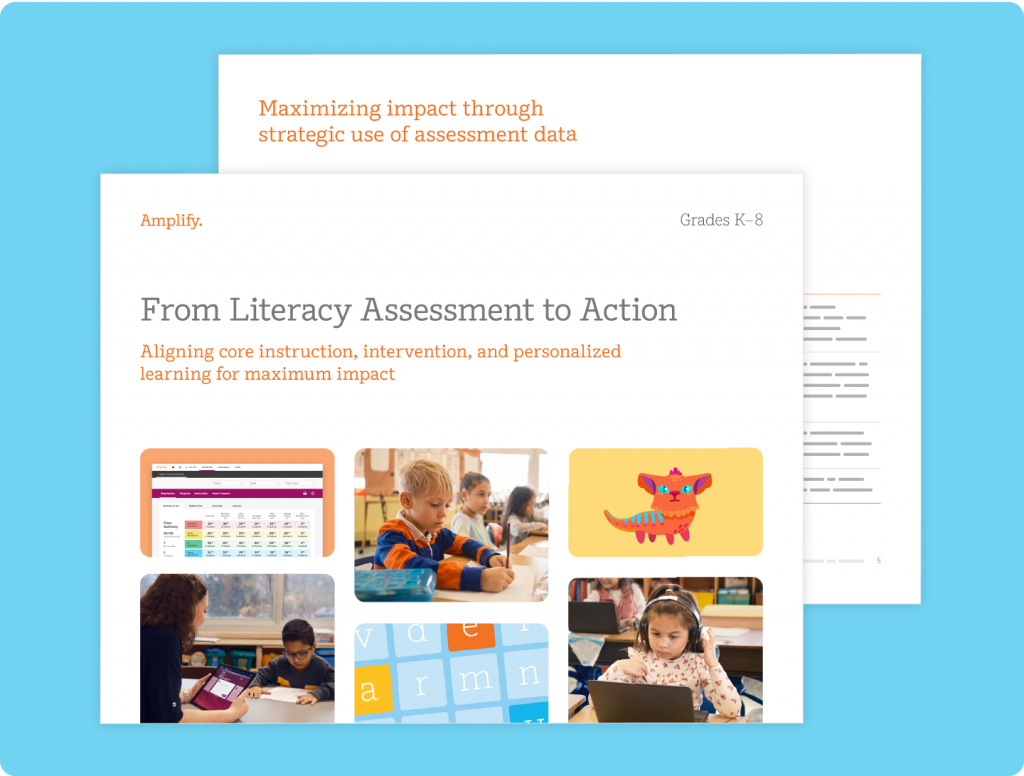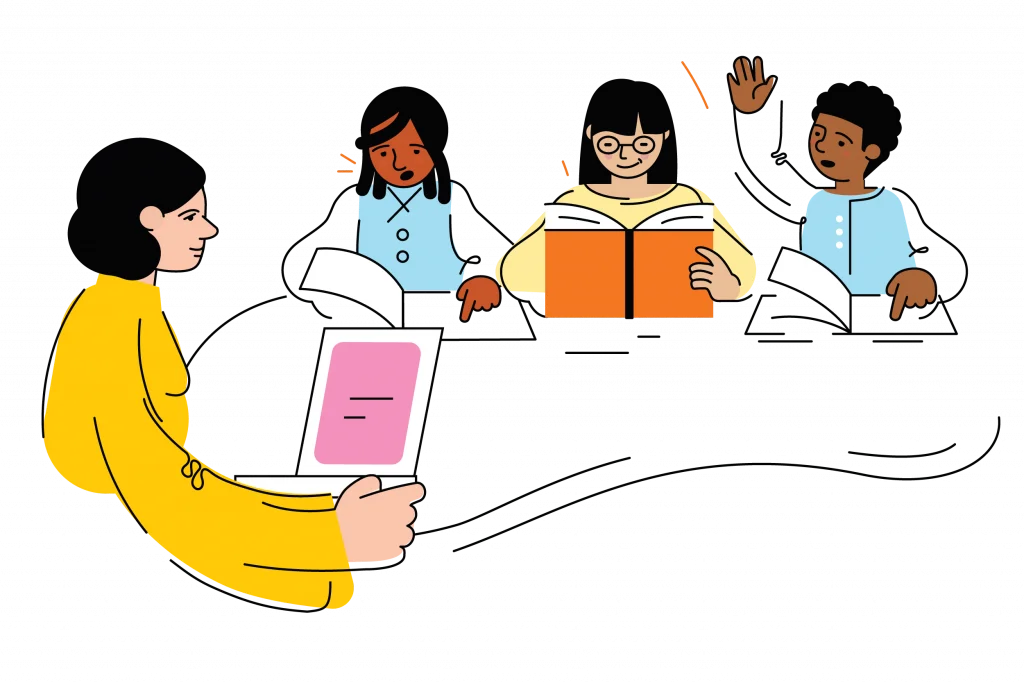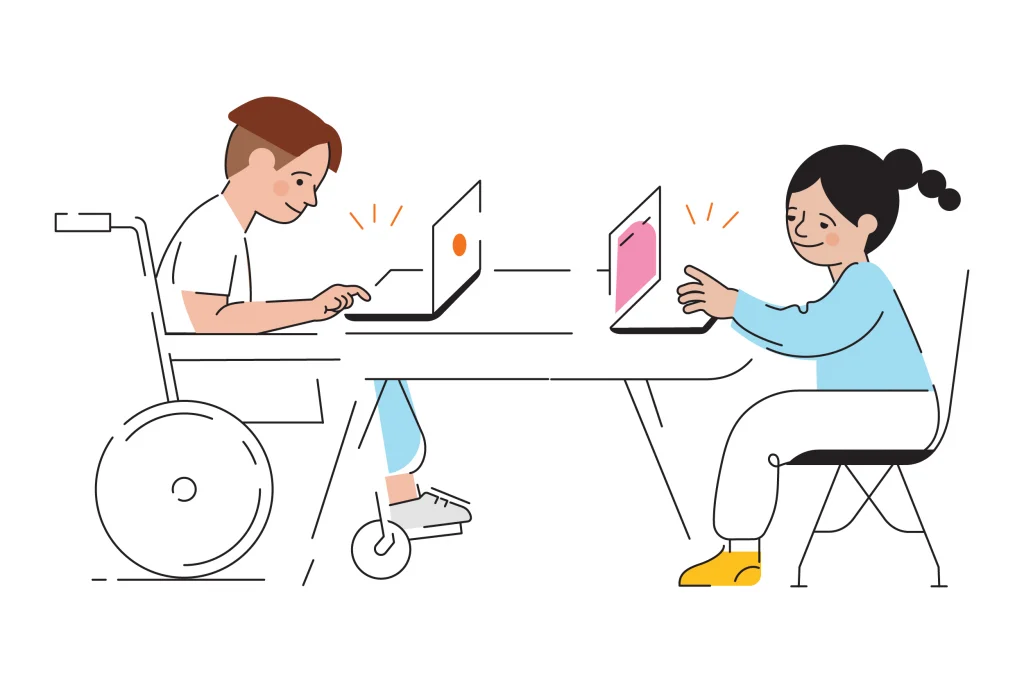
Teaching literacy is a balancing act. Your classroom may have students who soar through grade-level reading lessons and others who need additional support—or even intensive intervention—to keep up. And you may feel like there’s never enough time to meet everyone’s needs.
But with data, you can do it. By leveraging assessment data strategically, making the most of core instruction, and integrating intervention and personalized learning, you can give every student the support they need—without adding extra hours to your day.
Let’s break it down.
Types of data, defined
This you know: Not all assessments are created equal. Universal screeners help identify which students need extra support. Formative assessments track ongoing progress. Summative assessments measure overall learning. Each is a tool that equips you with the right information at the right time to adjust your instruction.
- Before core instruction: Universal screening and diagnostic assessments enable you to see where students are starting from and plan accordingly.
- During instruction: Formative assessments (e.g., quick checks, observations, and exit tickets) catch misunderstandings early so you can reteach on the spot.
- After instruction: Summative assessments measure progress; progress monitoring during intervention helps you know if students are on the right track before final assessments.
The goal isn’t more testing—it’s using the data from the assessments you have to make smarter instructional decisions.
Making the most of Tier 1 instruction
You spend most of the school day on core instruction. Making it as effective as possible benefits all students, not just those who are struggling. The key? Teach explicitly; use high-quality materials grounded in the Science of Reading; and keep instruction aligned to grade-level standards while allowing flexibility for different learning needs. Specifically:
- Model first, then guide, then let them try. Clear explanations and step-by-step modeling give students confidence before they work independently.
- Use formative assessments to adjust in real time. If an exit ticket shows most students didn’t grasp a concept, a quick reteach the next day can prevent gaps from growing.
- Group students for targeted support. Small groups during core instruction can help address specific skill gaps without taking students away from grade-level learning.
When core instruction is strong and built around what students actually need, intervention becomes more about fine-tuning rather than catching up from major gaps.
An MTSS framework: The right help at the right time
When assessment data shows that a student needs extra support, targeted intervention helps prevent small struggles from turning into bigger ones. A Multi-Tiered System of Supports (MTSS) can ensure that interventions are structured, data-driven, and matched to student needs.
- Intervention blocks and small groups: Some classrooms use dedicated intervention blocks to provide students extra support without missing core instruction. Others incorporate targeted small-group instruction during the literacy block. Either way, intervention works best when it’s built into the schedule, not squeezed in as an afterthought.
- Progress monitoring: Once students enter intervention, regular check-ins track their progress and allow you to make adjustments as needed without waiting for the next big assessment.
Small shifts, big impact
For students who are on track or need more challenge, personalized learning tools—such as adaptive reading programs—can provide meaningful independent practice. High-quality programs adjust automatically based on student performance, so each student gets exactly the right level of support or enrichment without adding extra prep for you.
In other words, teaching literacy well isn’t about working more—it’s about working strategically. By using assessments to inform your instruction, strengthening core teaching, and providing structured support or intervention when needed, you can position every student for success, no matter where they start.
More to explore
- MTSS: The key to success
- What Does Data Tell Us? Building Buy-in and Determining Areas of Need with Data
- Starting Your Science of Reading Shift: How to Use Assessment Data as a Building Block of MTSS
- The Story That Data Tells: Using Data to Chart Your Course With the Science of Reading
- Data as Your Compass: How Data and Assessment Guide Change When You’re Implementing a New Literacy Curriculum

